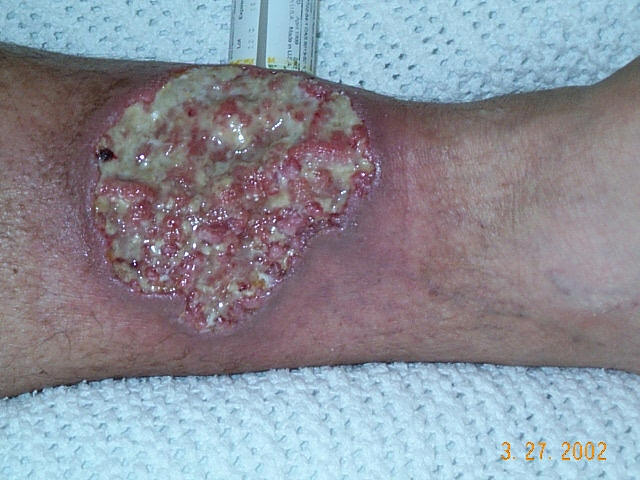Pyoderma Gangrenosum

Pyoderma gangrenosum is a rare, destructive inflammatory skin disease of which a painful nodule or pustule breaks down to form a progressively enlarging ulcer. Lesions may occur either in the absence of any apparent underlying disorder or in association with other diseases, such as ulcerative colitis, Crohn's disease, polyarthritis (an inflammation of several joints together), gammopathy, vasculitis, leukemia, and other conditions. Each year in the United States, pyoderma gangrenosum occurs in about 1 person per 100,000 people.
Pyoderma gangrenosum belongs to a group of autoinflammatory skin diseases called neutrophilic dermatoses. Neutrophils are a type of white blood cell or leukocyte which form an early line of defense against bacterial infections. Ulcerations associated with pyoderma gangrenosum may occur after trauma or injury to the skin, a process called pathergy. Treatment involves wound care and the use of anti-inflammatory agents, including antibiotics, corticosteroids, immunosuppressants, and biologics.
Pyoderma gangrenosum belongs to a group of autoinflammatory skin diseases called neutrophilic dermatoses. Neutrophils are a type of white blood cell or leukocyte which form an early line of defense against bacterial infections. Ulcerations associated with pyoderma gangrenosum may occur after trauma or injury to the skin, a process called pathergy. Treatment involves wound care and the use of anti-inflammatory agents, including antibiotics, corticosteroids, immunosuppressants, and biologics.